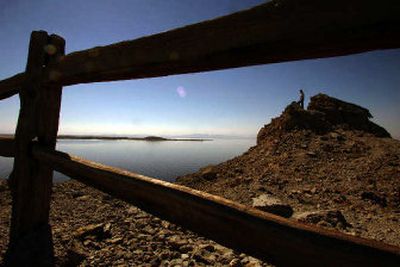Former weapons site, future homes?

SALTON CITY, Calif. – The agency that manages the Salton Sea wants to build up to 200,000 homes around the state’s largest lake, including some on a former atomic weapons testing site.
Under the plan, the agency would sell the shuttered Salton Sea Test Base to developers and use the proceeds and property tax revenue from the new homes to clean and restore the polluted lake about 90 miles northeast of San Diego.
The plan could entail moving to the east the boundaries of the Sonny Bono Salton Sea National Wildlife Refuge, which is a key stopover on the Pacific Flyway for more than 100,000 migrating birds.
“All we want to do is create the opportunity for development to occur to create a revenue stream for our plan,” said Imperial County Supervisor Gary Wyatt, chairman of the Salton Sea Authority board. “You create a lake that has good, clean water.”
Critics worry that development could eliminate resting and nesting places for more than 400 species of birds. They also fear the 7,800-acre former military base is polluted, possibly with depleted uranium from some of the 1,100 mock bombs that were tested there until 1961.
“So would you like to put your house on that test base?” said Dale Hoffman-Floerke, chief of the Colorado River and Salton Sea office for the state Department of Water Resources. “Unequivocally, no, I wouldn’t put my house there.”
The 370-square-mile sea was created in 1905 when floodwaters broke through a Colorado River irrigation canal. It is fed mostly by agricultural runoff.
Citigroup Inc. is conditionally prepared to underwrite more than $600 million in bonds to finance the proposed development. The authority’s board is scheduled to vote Oct. 27 on the plan, which also must be approved by federal and state agencies.
Homes would be built over 30 to 40 years. The plan would include an eight-mile dam across the sea, creating a large north lake, and a smaller lake and wetlands in the south.
Salton Sea Authority Director Ron Enzweiler said there was no record of nuclear activities or material on the former base. Additional tests would be done before houses were built, he said.
Restoration of the lake is mandated under federal and state legislation allowing half of its water to be transferred to urban areas for up to 75 years beginning in 2017.